Luc-Ewen Martin-Fenouillet began his career in visual effects over 17 years ago. He worked at Mikros Image, Method Studios and Cinesite before joining MPC in 2015. He has worked on films such as John Carter, Dumbo, Cruella and Sonic the Hedgehog 2.
What is your background?
Being fascinated by fine art and technology, I studied computer graphics at Isart Digital in Paris, with a focus on Lighting and Lookdev. After a year working on French high-end commercials, I crossed the English Channel to work on Hollywood movies, and never turned back.
How did you and MPC get involved on this show?
MPC has a long history of working with Ridley Scott, ever since Gladiator. Charley knew MPC could handle epic battles and large environments with an uncompromising attention to details. I had the pleasure to work with Charley on Alien Covenant and Artemis Fowl, so when I heard Napoleon was coming in, I asked to be put forward. Maybe my French nationality also gave me a pre-disposition for the role.
How was the collaboration with director Ridley Scott and VFX Supervisor Charley Henley?
Ridley has an incredible eye for composition and knows what is important to tell the story he wants. He would paint over printed frames of keyshots that we would later use as a reference throughout the process. Incredibly, the end result always came very close to the original sketch, which is a testament to his non-wavering vision. Charley involved MPC very early so we could develop crowd systems that would blend seamlessly next to the filmed soldiers.
What was their approach and expectations about the visual effects?
From the beginning, we knew we were working on an invisible VFX show of epic scale. In terms of environments, the whole movie was shot in beautiful historical locations, but instead of replacing everything, we extended existing buildings and incorporated iconic elements of the desired location. The intention was never to replicate an exact match, but ground the realism from the plates, and add key features to transport our perception where-ever the story needed to be. The approach for the battles were more straight forward. Ridley shot hundreds of actors, in full costume and gears, performing the actions on locations, and MPC had to multiple their numbers by the tens of thousands.
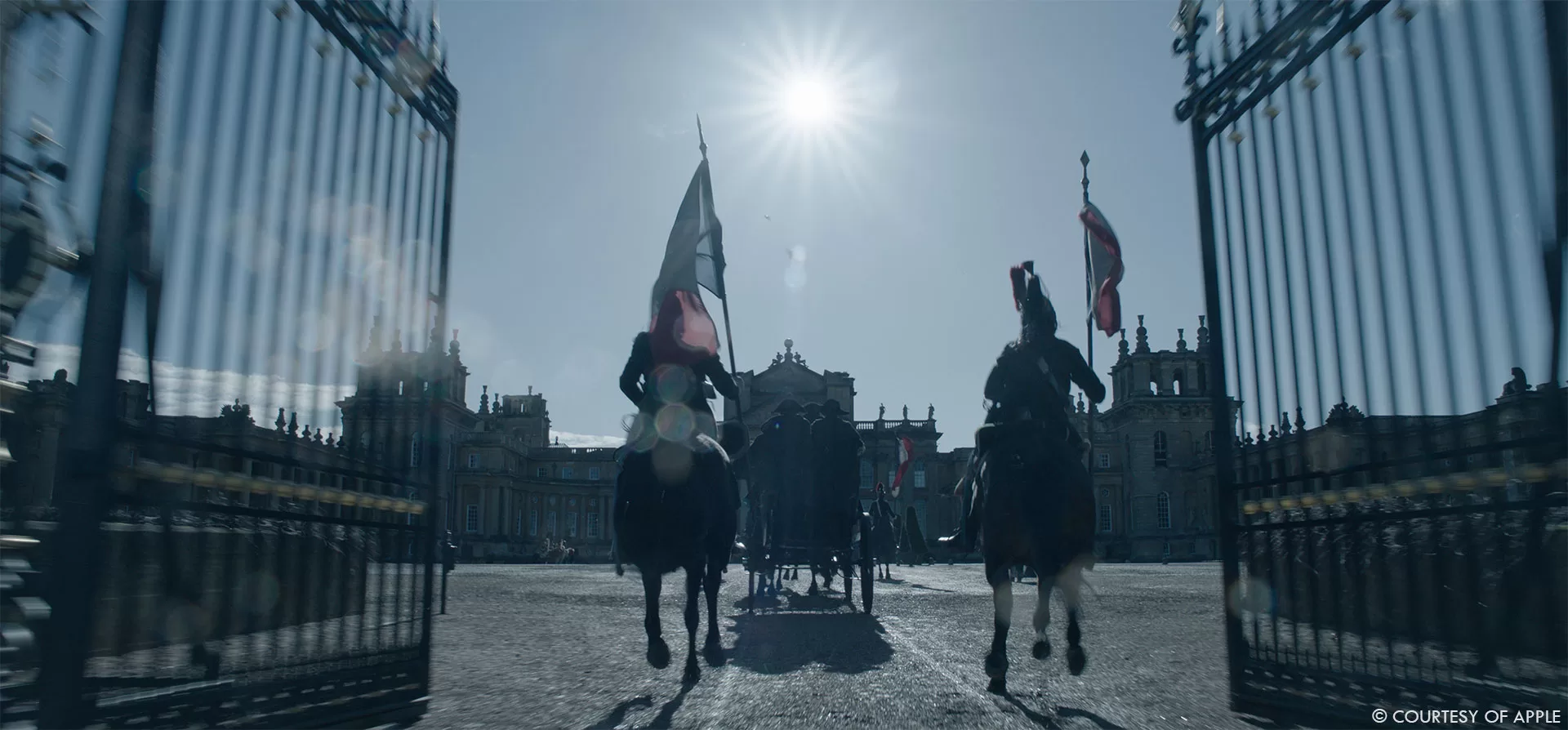
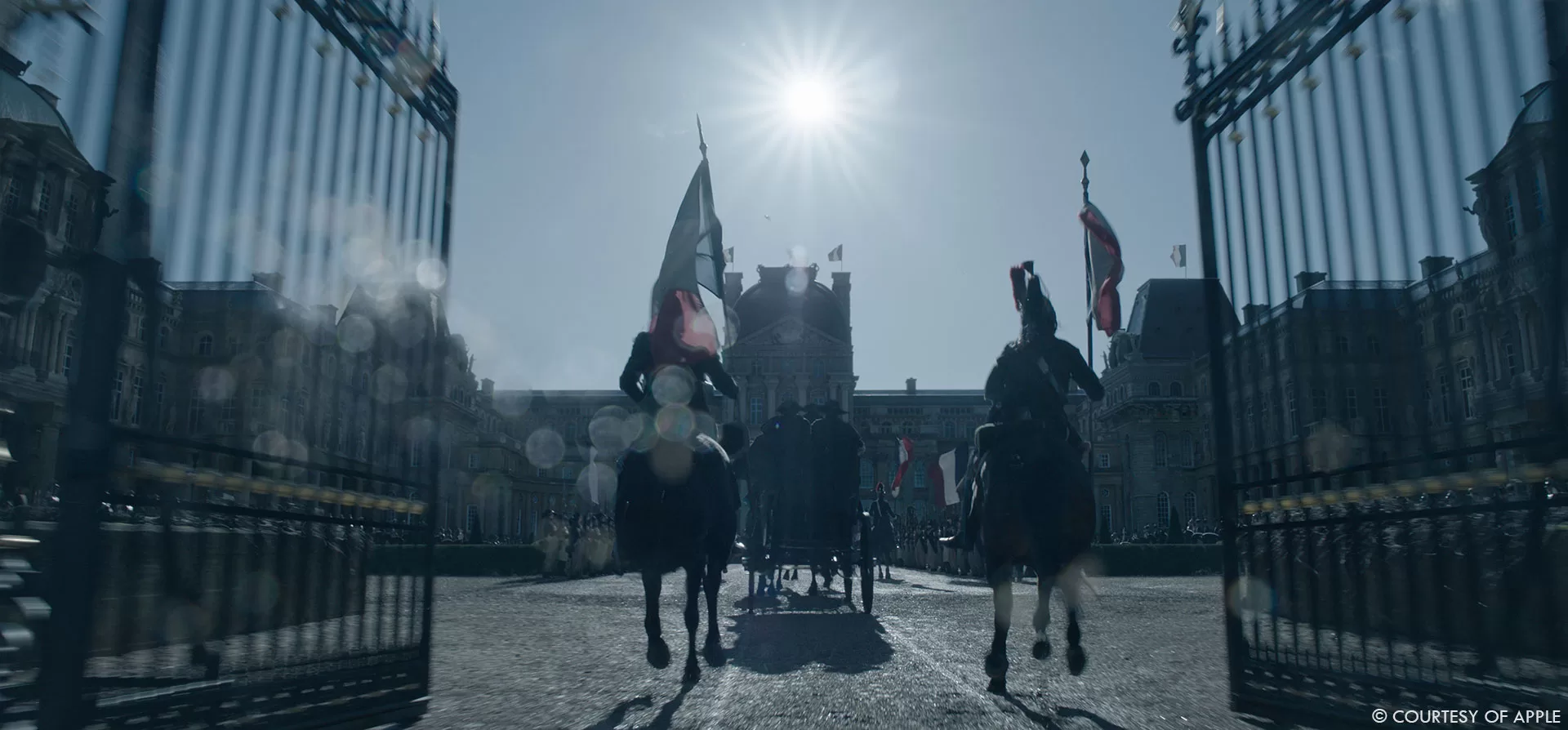
What are the sequences made by MPC?
In historical order, MPC worked on the Napoleon’s horse getting shot in chest by a cannonball, the Tuileries Palace, the arrival in Moscow (as well as its burning) and the battle of Waterloo.
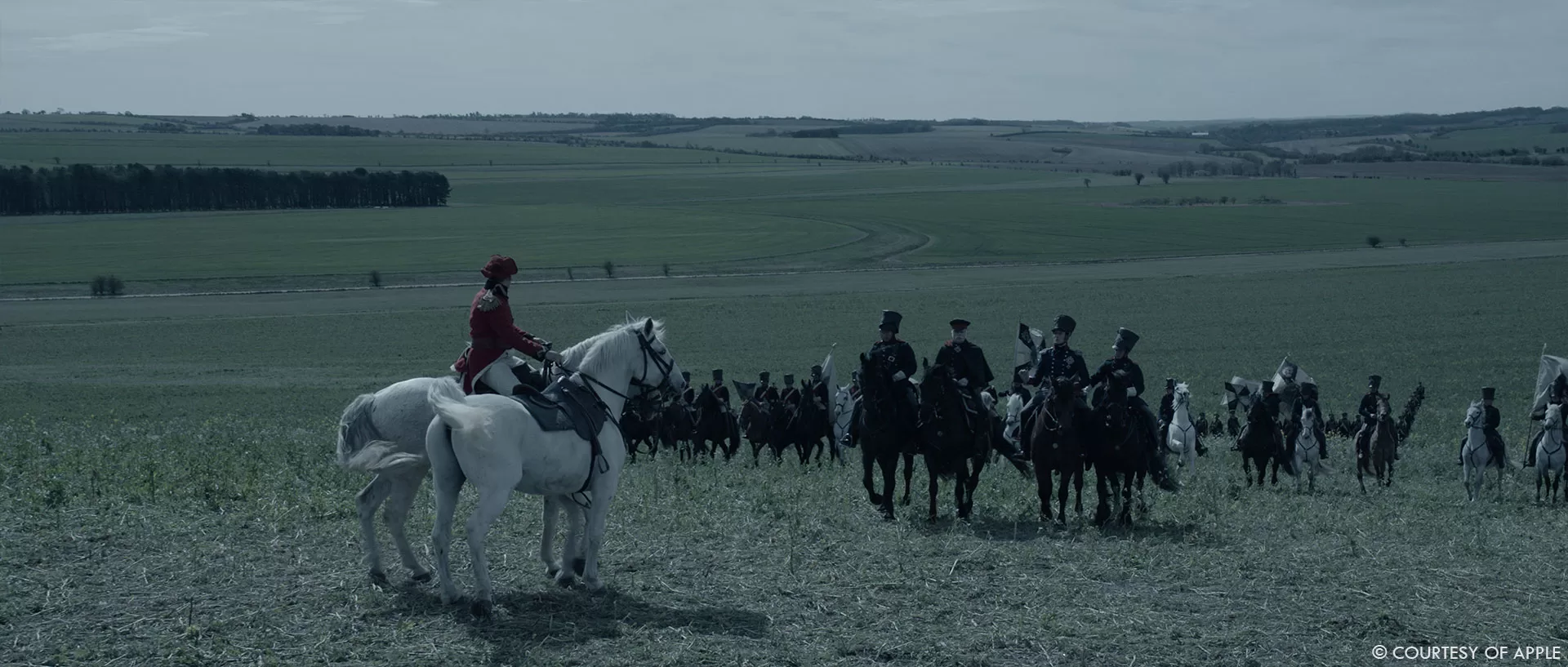
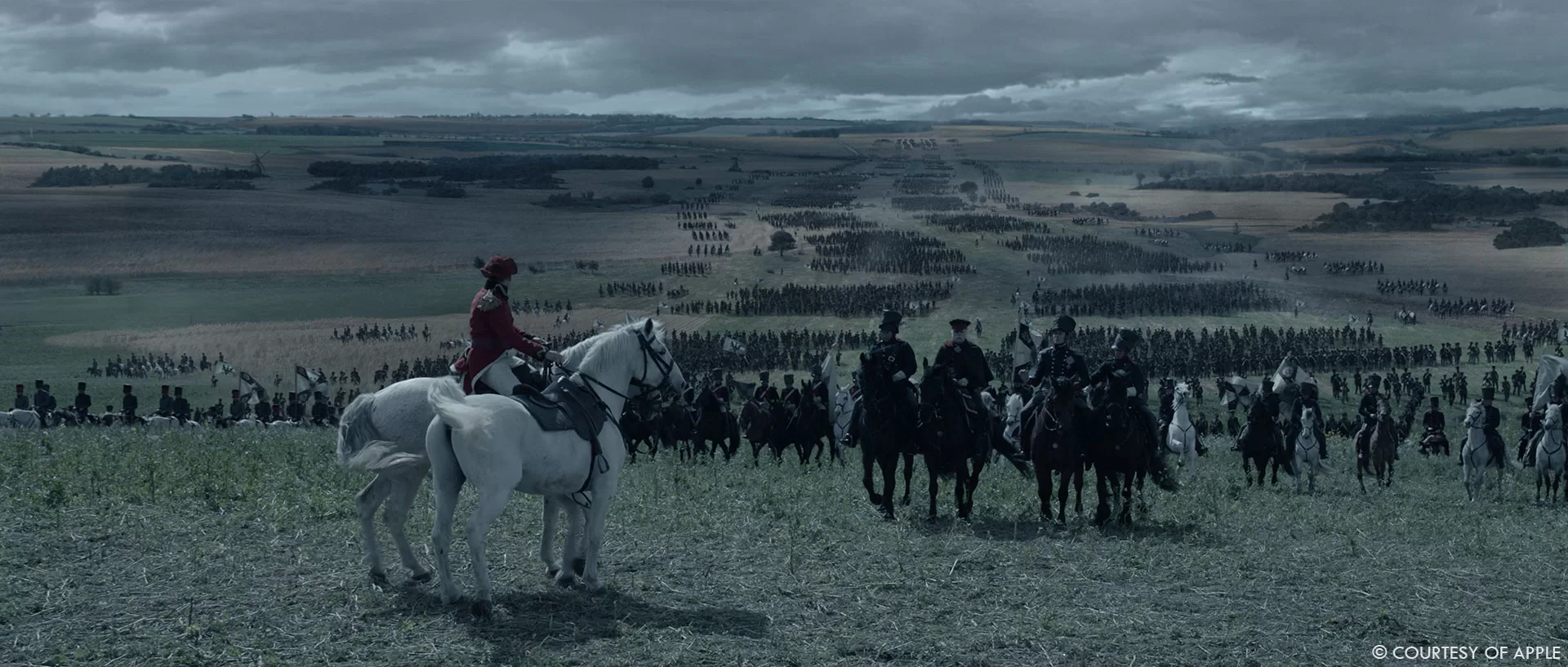
Where was filmed your various sequences?
The battle of Toulon, where the horse gets shot, was filmed in Malta. The Tuileries and Moscow were shot in Blenheim Palace, a UNESCO-protected national Monument in Oxfordshire, UK. The Battle of Waterloo was filmed in Churn Estate, located in South-East of England.
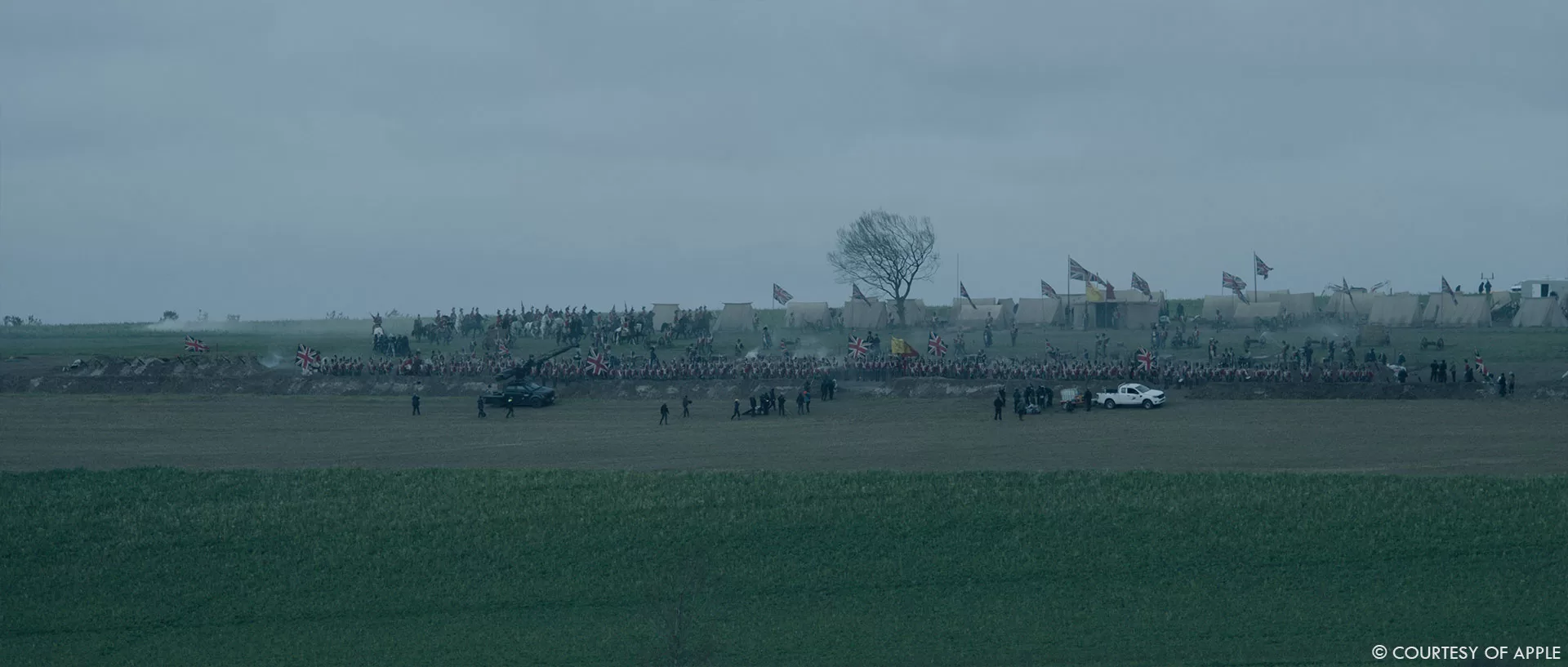
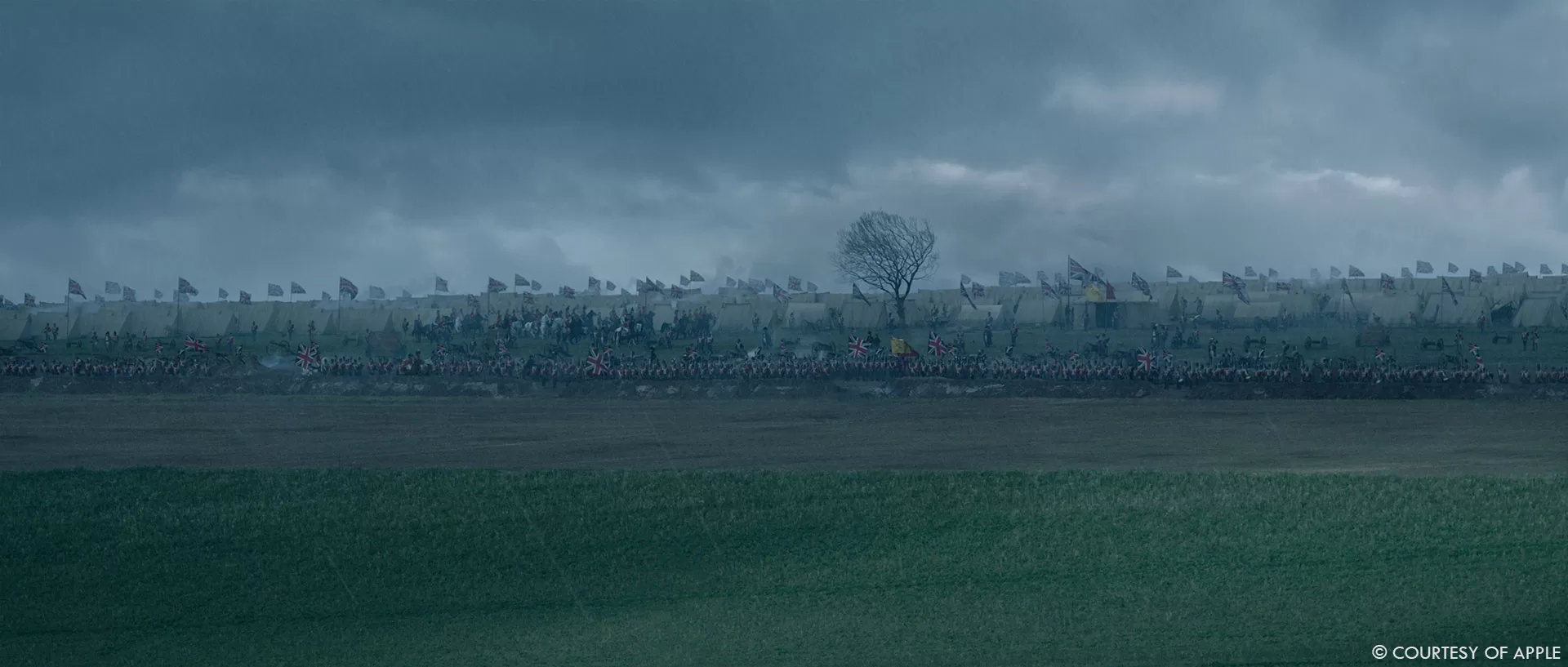
Can you elaborates about the environments work and especially about Moscow?
Moscow sequences were filmed in Blenheim, which has strong textural details in the stone work. The first test Charley requested was to try to grade the original plate to reduce details and get ourselves closer to the Kremlin painted plaster. From there, we started to extend with tall walls surrounding the Red Square and lastly incorporated selected buildings that existed based on historical references, like Eastern Orthodox churches.
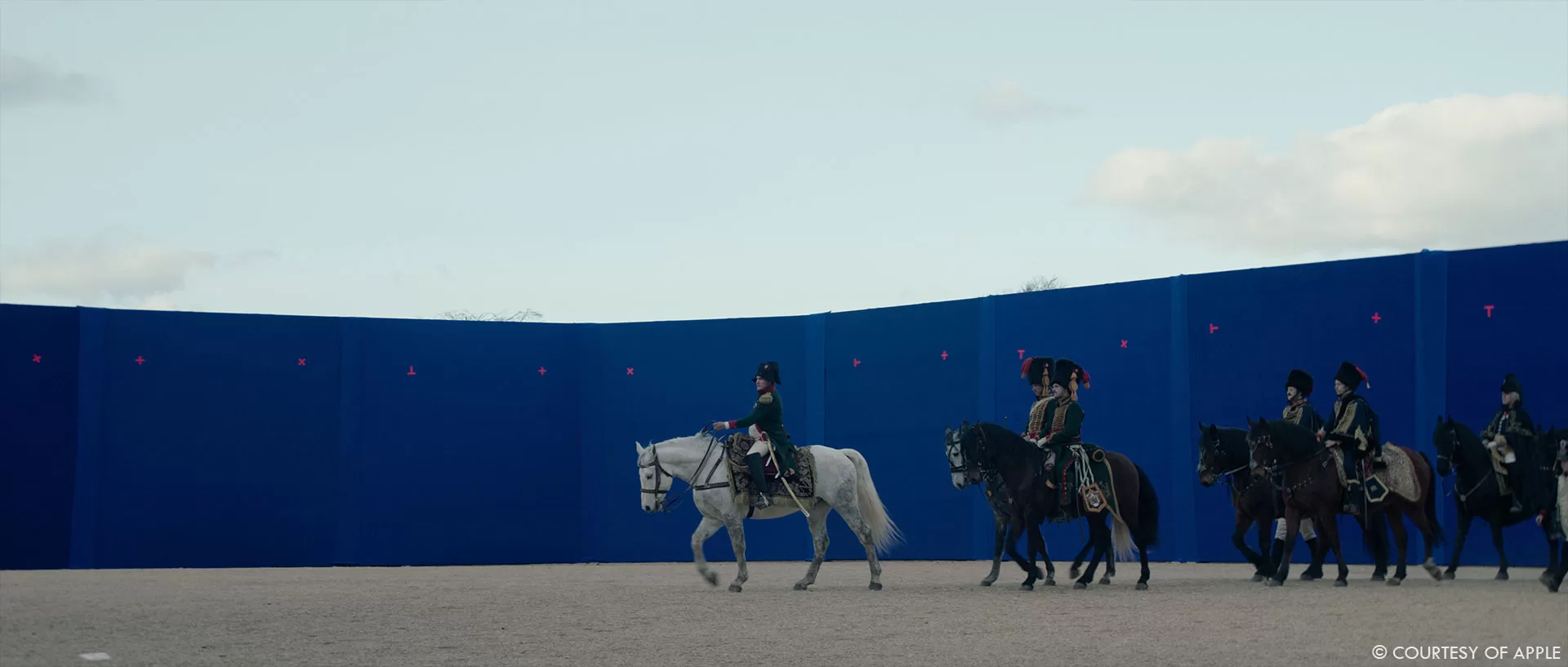
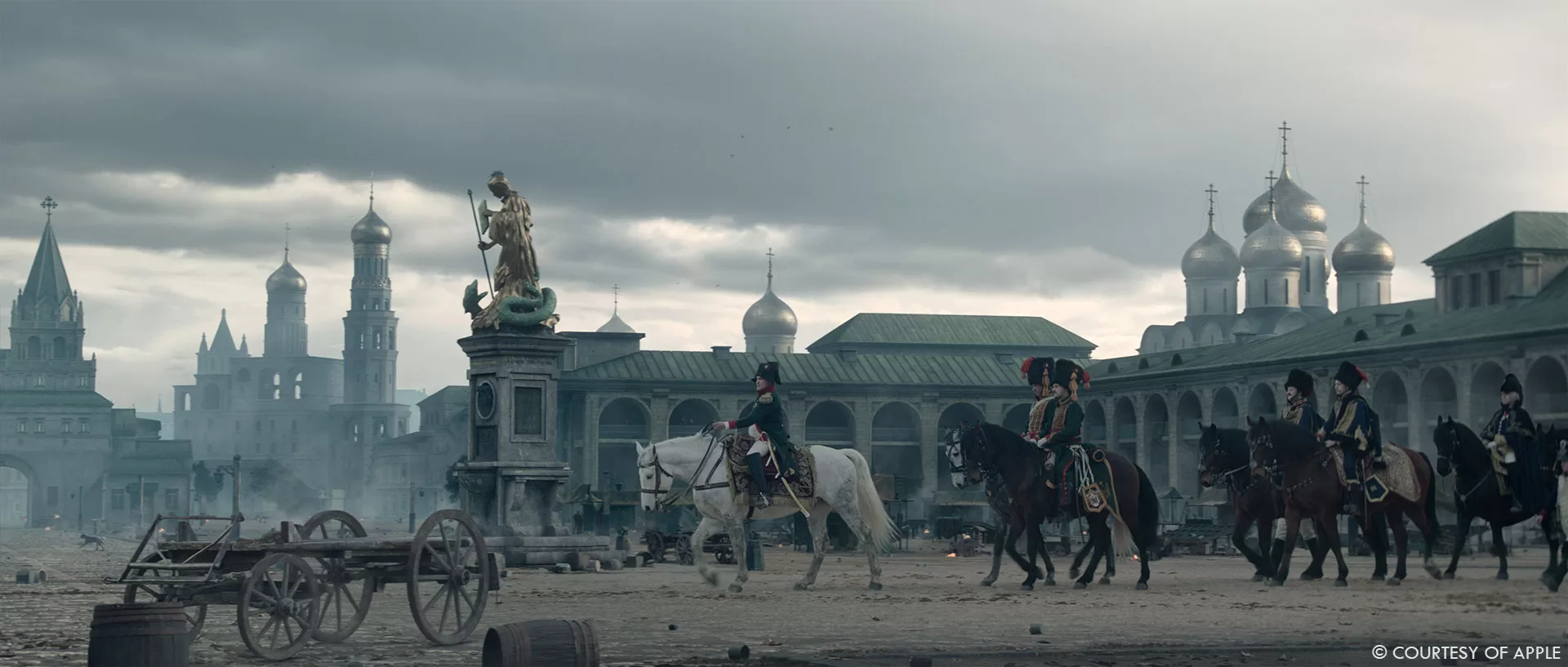
What kind of references did you received for Moscow?
For Moscow, we relied on period sketches, paintings or lithographies, depicting Moscow prior or around the same time as the Russian Campaign.
Can you tell us more how you set Moscow on fire and its destruction?
Charley had a clear image of how the composition needed to be for when Napoleon discovers the destruction. We quickly blocked the main volumes of streets and buildings using basic geometry, then started dressing up the large fires and smoke simulations till we reached a pleasing art direction. To reduce render time and provide more flexibility, all the smaller scale flames were done in compositing using element footage.
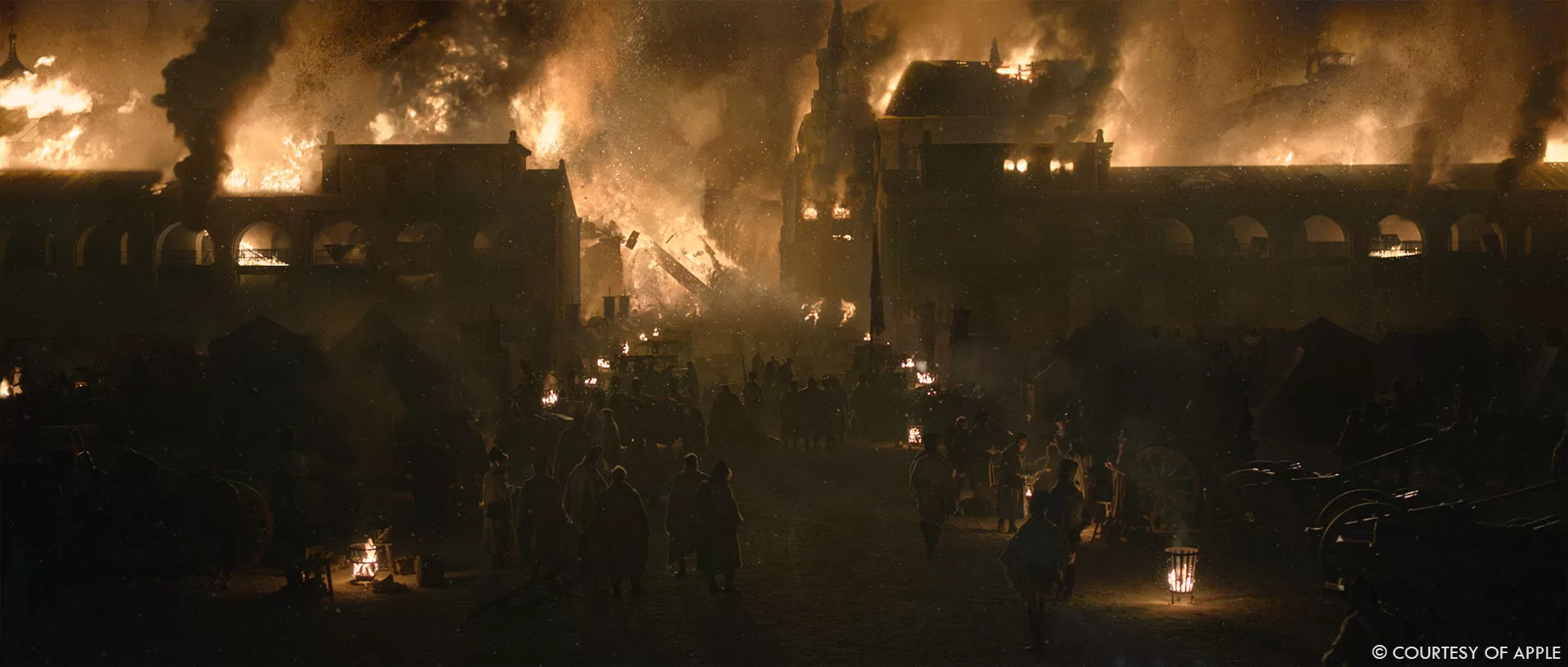
How did you created the Tuileries?
The Tuileries were filmed in Blenheim Palace, which has a wonderful Baroque-English style that is surprisingly closed to The Louvre (otherwise known as the Tuileries) Even the overall shape of the Palaces matched, with a distinctive U-shape. We therefore decided to keep the full ground floor from the plate, and extended two floors up in order to add the rows of sculptures and the iconic blue-ish green rooftops. Both of the Palace wings were then extended out and the French garden, based on historical maps, was dressed in front of the entrance. Thierry Hamel, our Env Supervisor, and his team did a truly exceptional job on this environment.
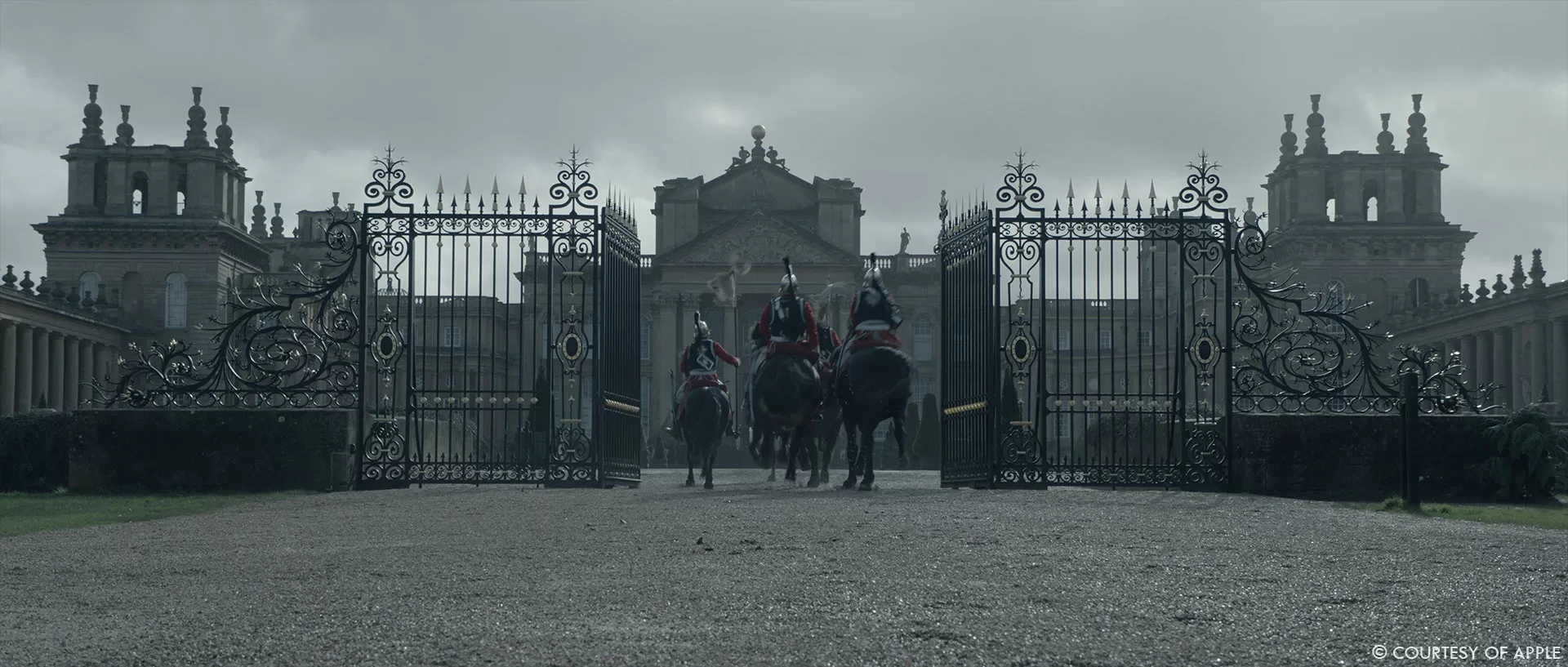
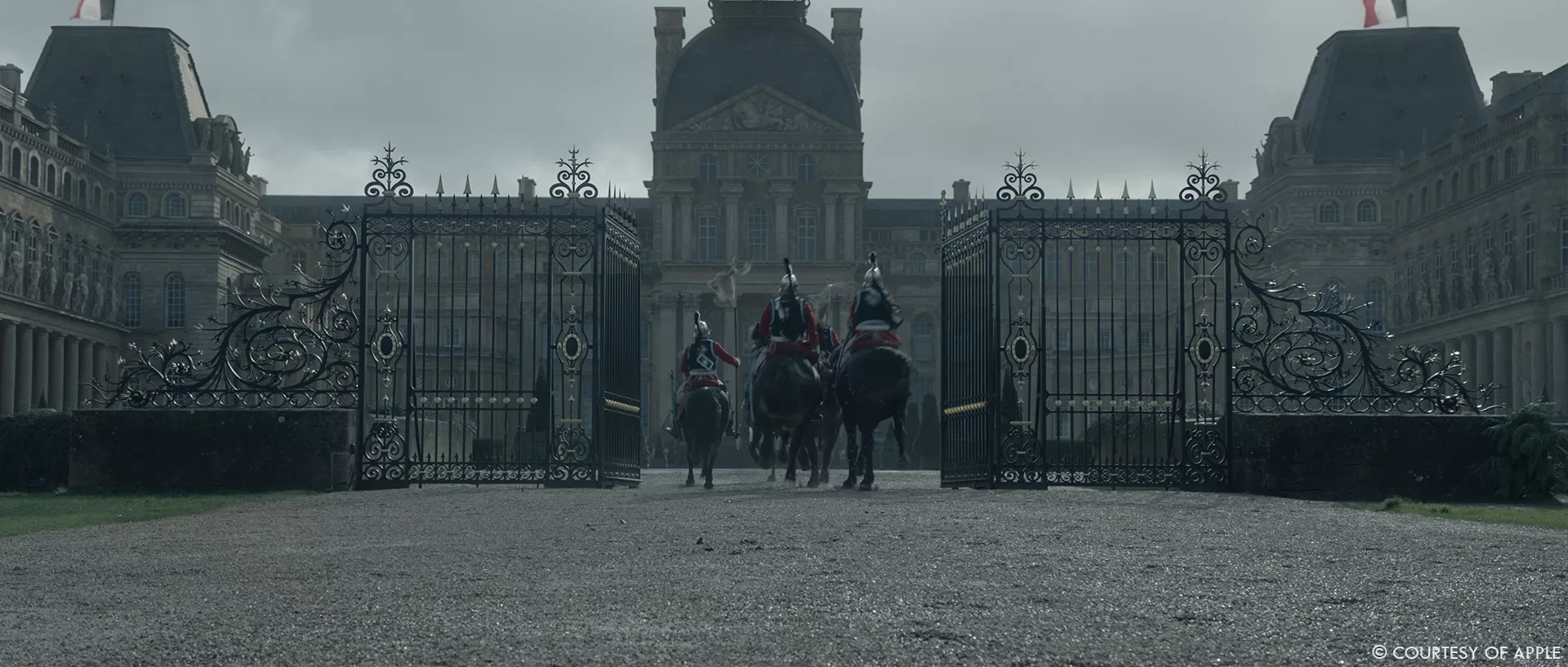
What was your approach about the Waterloo battle?
The Waterloo Battle is almost 150 shots, we split it into manageable beats with defined keyshots and own challenges. The goal was to keep as much as possible of the plate action, our VFX to multiple army camps and soldiers’ numbers. Whenever possible, we used a 2D approach for the army extensions to keep our CG team focused on large epic shots. Ridley Scott shot each take with multiple cameras, which provided a lot of very valuable material we could use as elements. For the heavier CG shots, we would match the plate action directly on top to verify we had the correct behavior and details, before multiplying the soldiers across the battlefield.
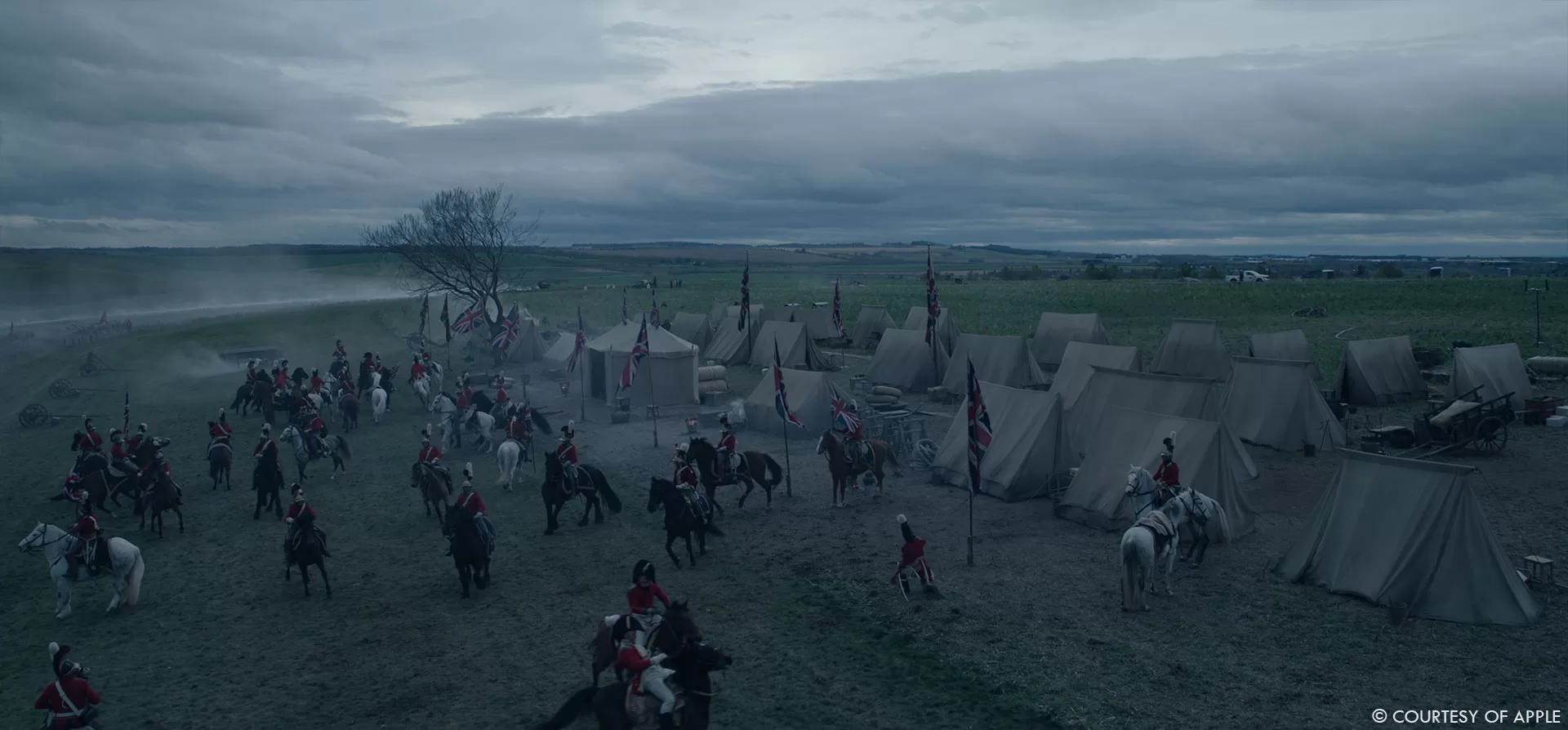
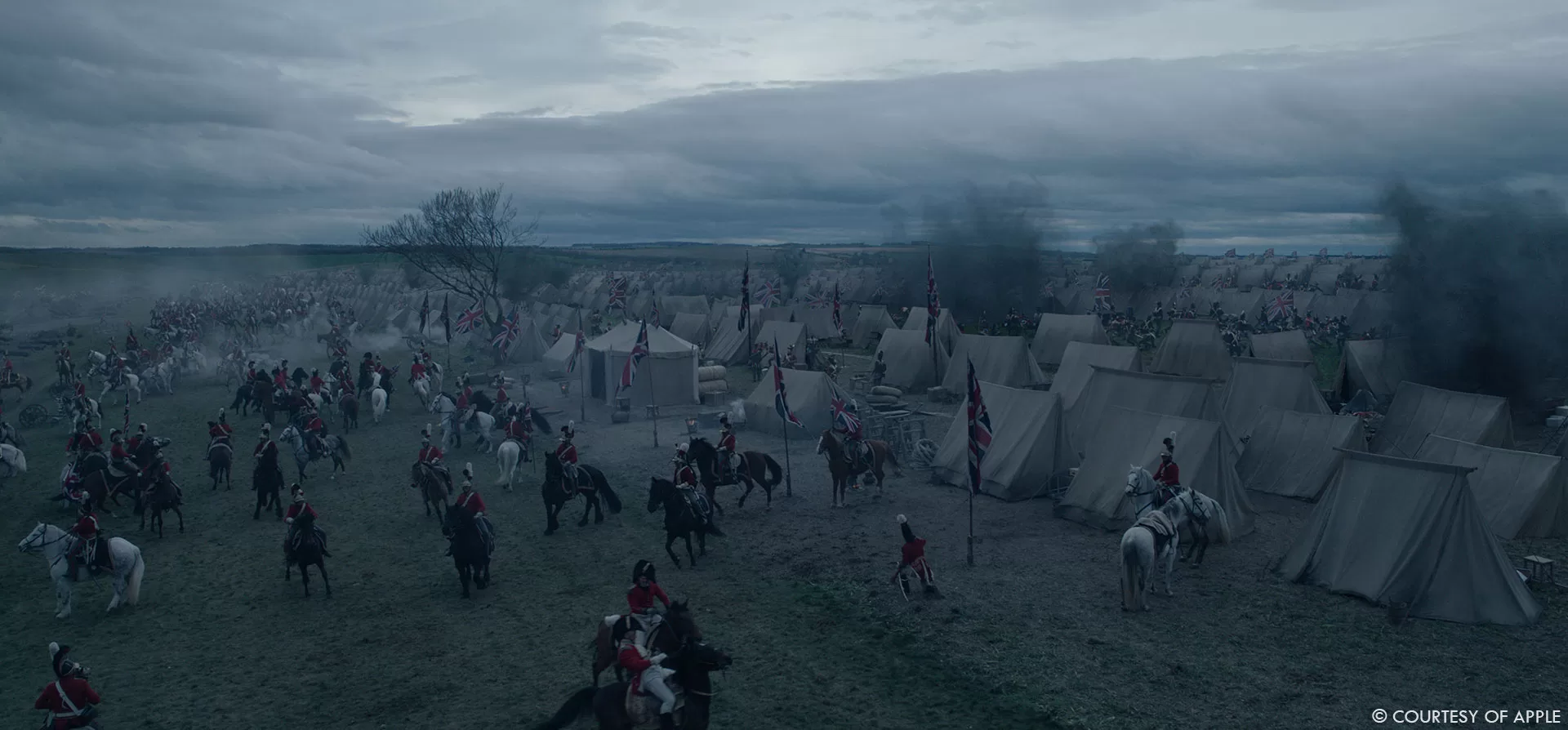
How did you create the animate the two armies?
The first step to recreate the armies was to build up an extensive list of actions to replicate them. From the Generals to the infantry drummers, we identified a large panel of motions we could then trigger upon request. Napoleonic warfare had distinctive military drills, but every actor on set behaved and moved a certain way, we needed to make sure our crowd had as much organic variety. MPC used the services of Imaginarium Studio in London for performance capture. We first blocked the placement and timing of the crowd to flesh out the whole sequence, then incrementally swapped agent variations and motion clips to reach a natural look.
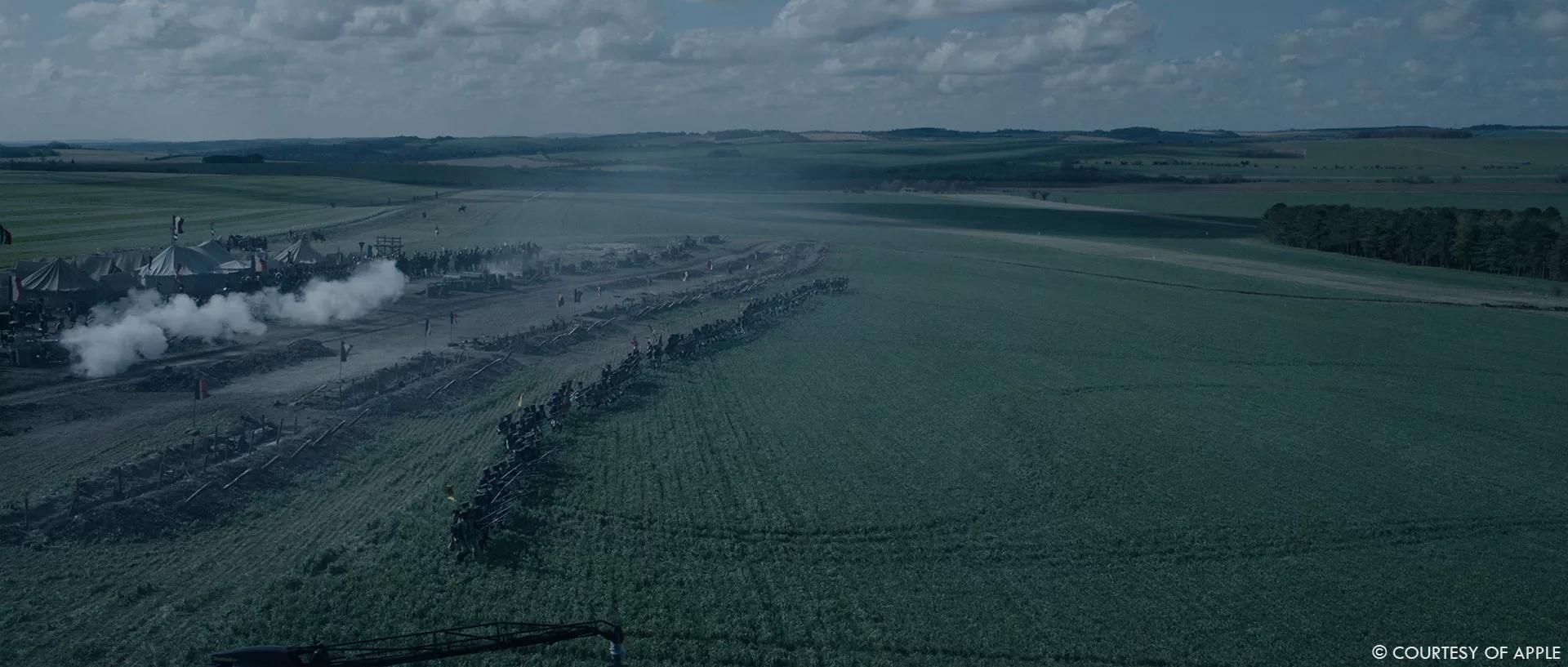
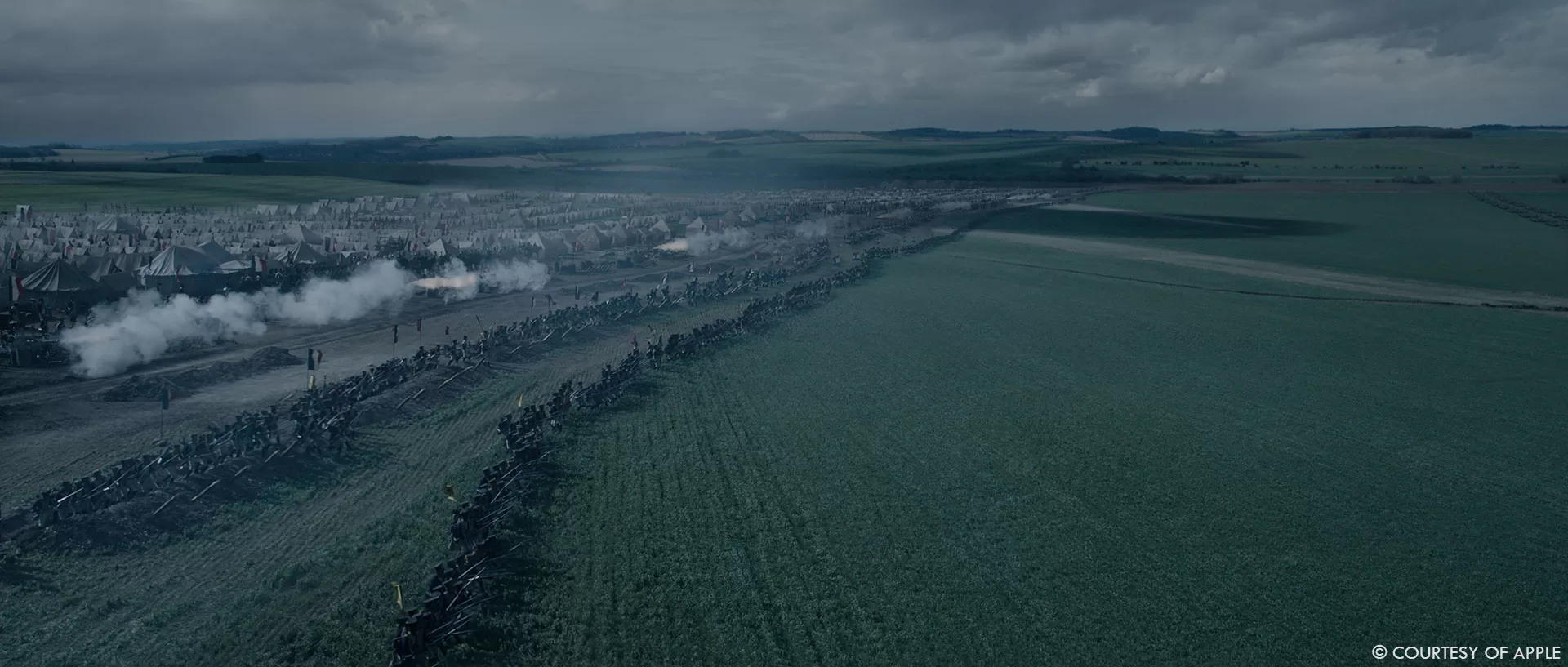
How did you work with the SFX and stunts teams for this battle?
We relied heavily on SFX, from cannon blasts to explosions. We created setups to add within muzzle flashes within SFX cannon smoke, and made a library of gory bits to add in close up explosions from the set. Keeping as much of the shot SFX from the plates was key to deliver the level of realism this battle required.
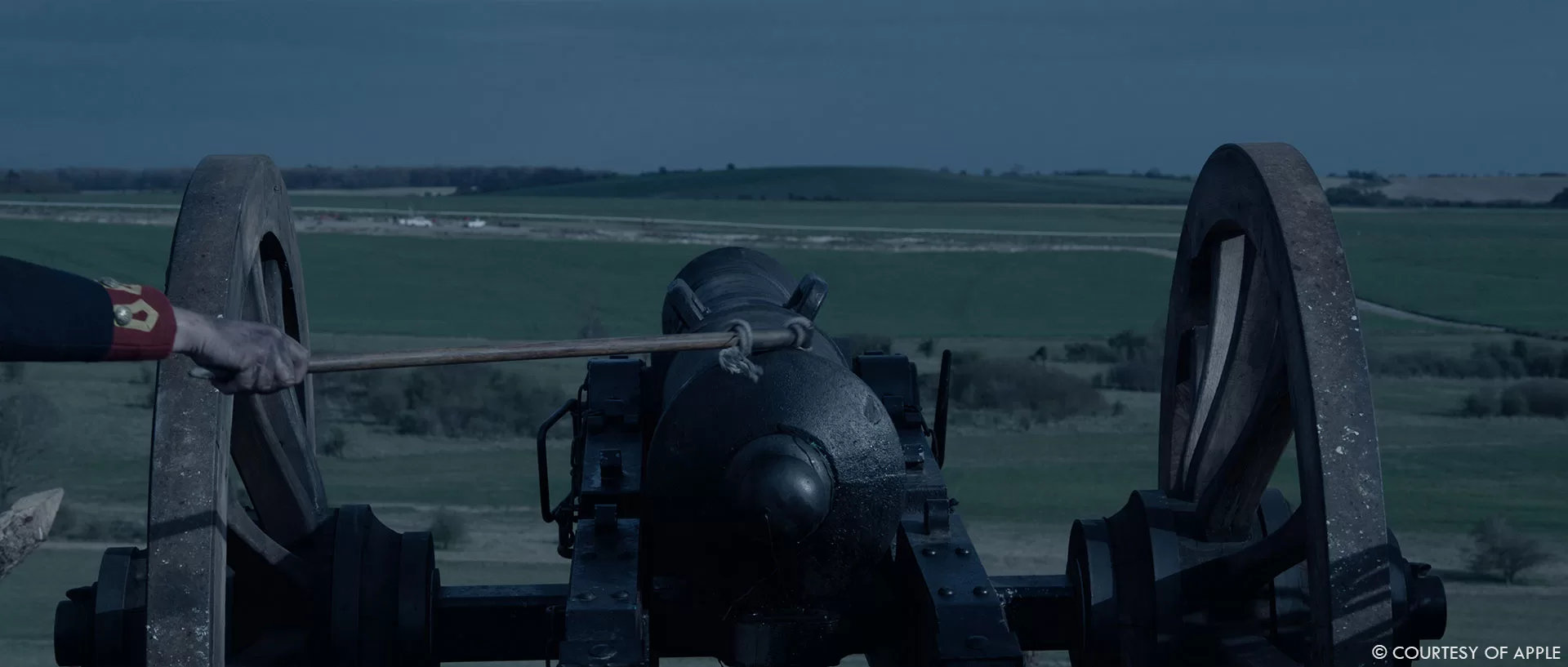
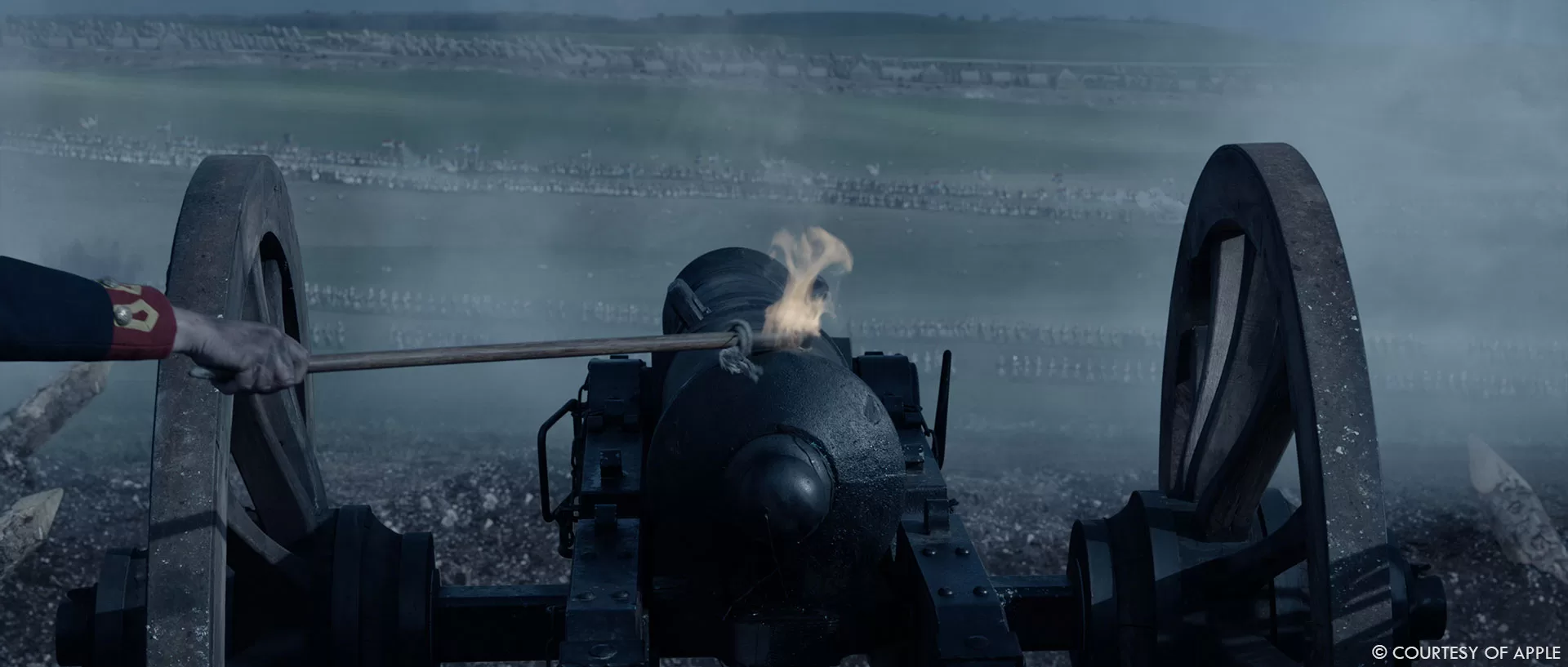
What was the main challenges to recreate the Waterloo battle?
The main challenge was the tell a continuous story so we could clearly understand the different beats and specific moments from each army.
Which sequence or shot was the most challenging?
The British infantry forming the defensive squares during the Waterloo Battle certainly was the most challenging due to its high complexity, shoulder to shoulder crowd agents moving as one.
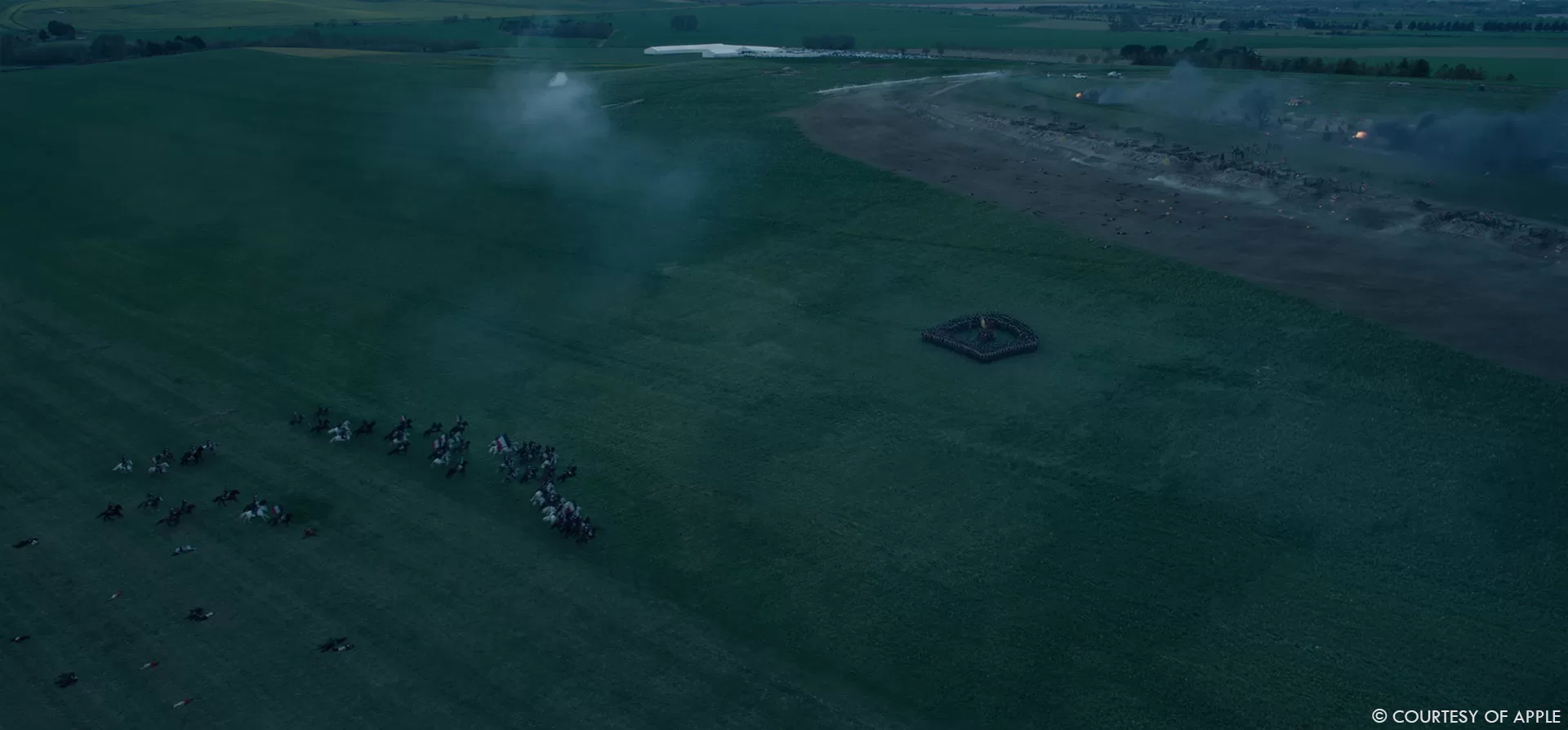
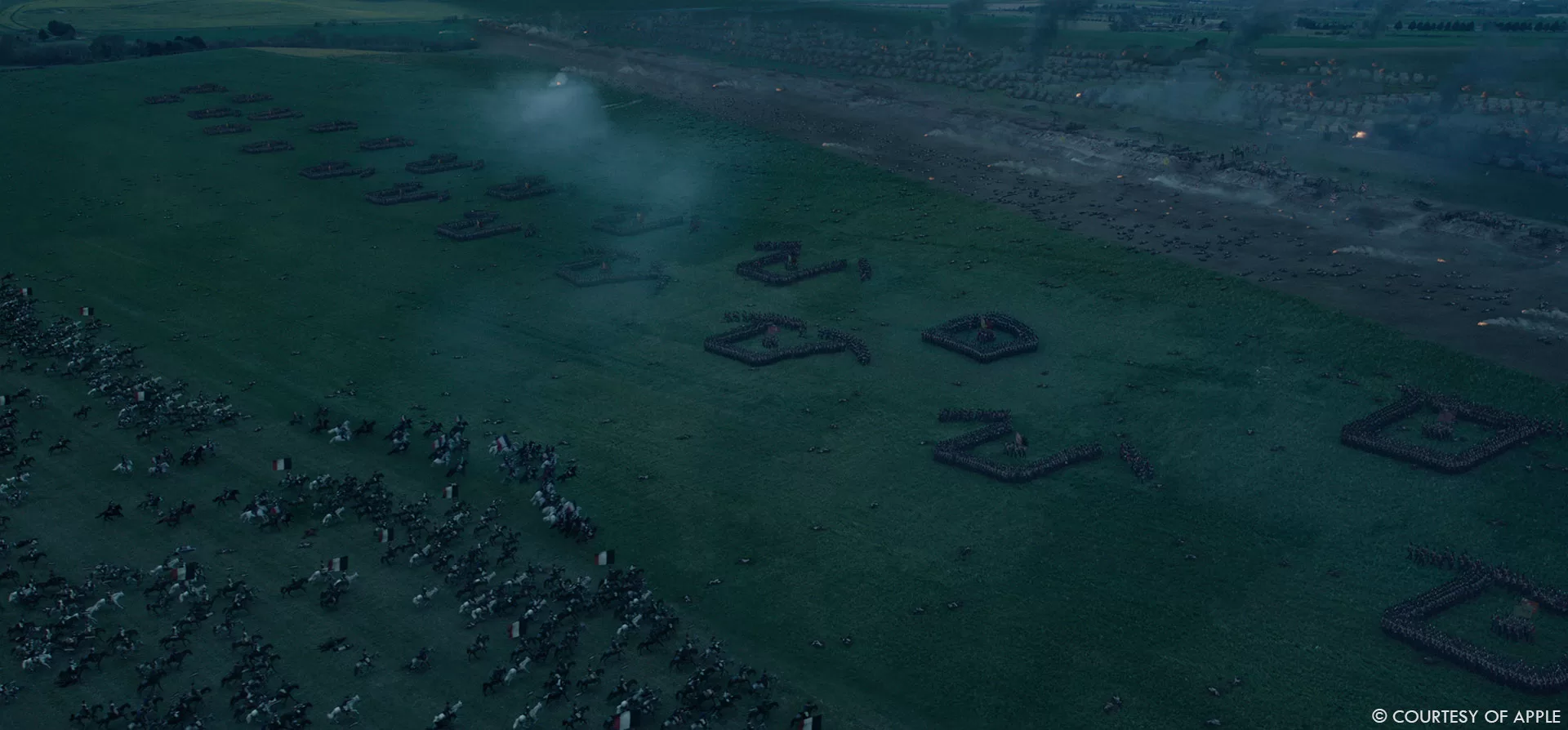
Is there something specific that gives you some really short nights?
Probably characters dynamics on cavalry. It’s not easy to breath life into 30 000 charging horses and riders.
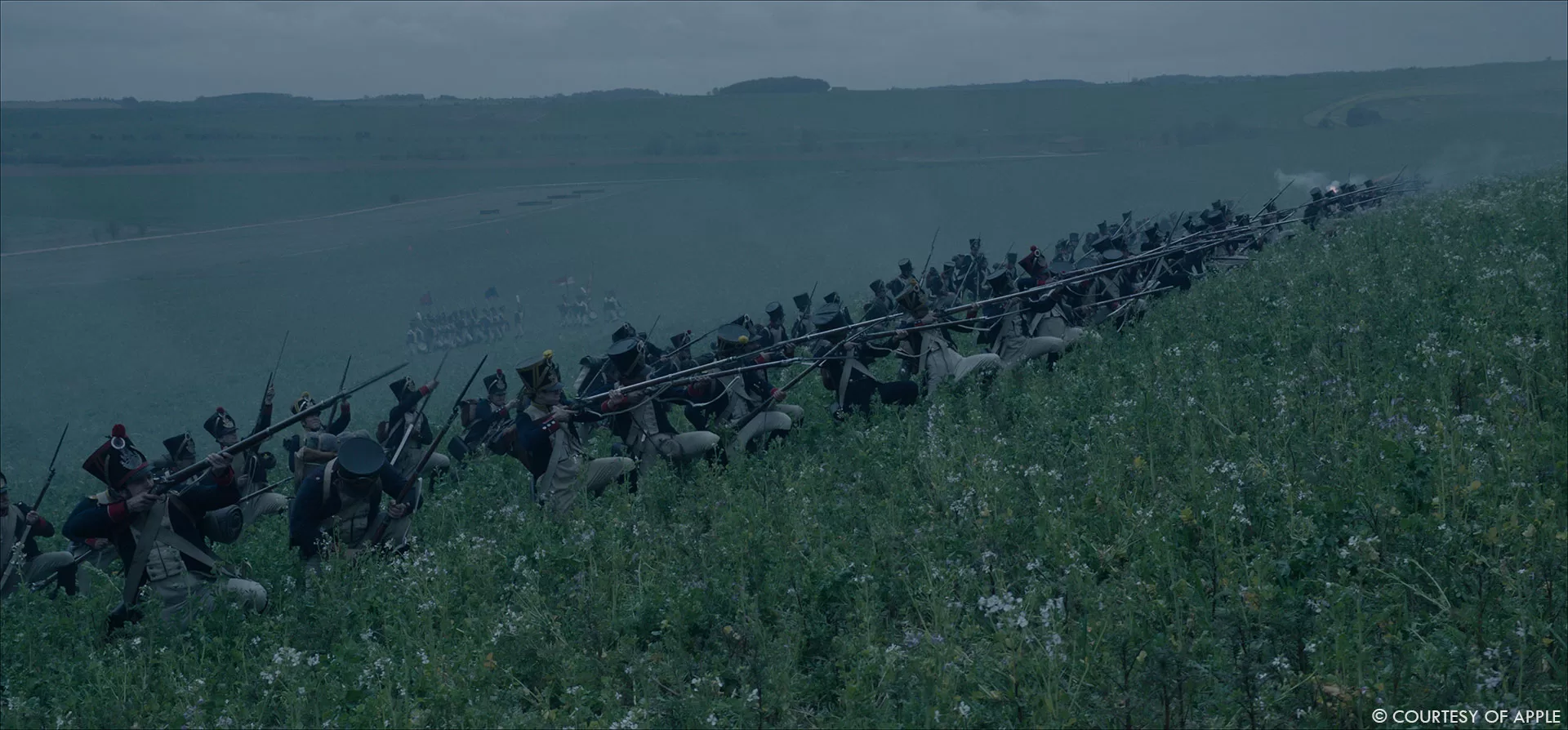
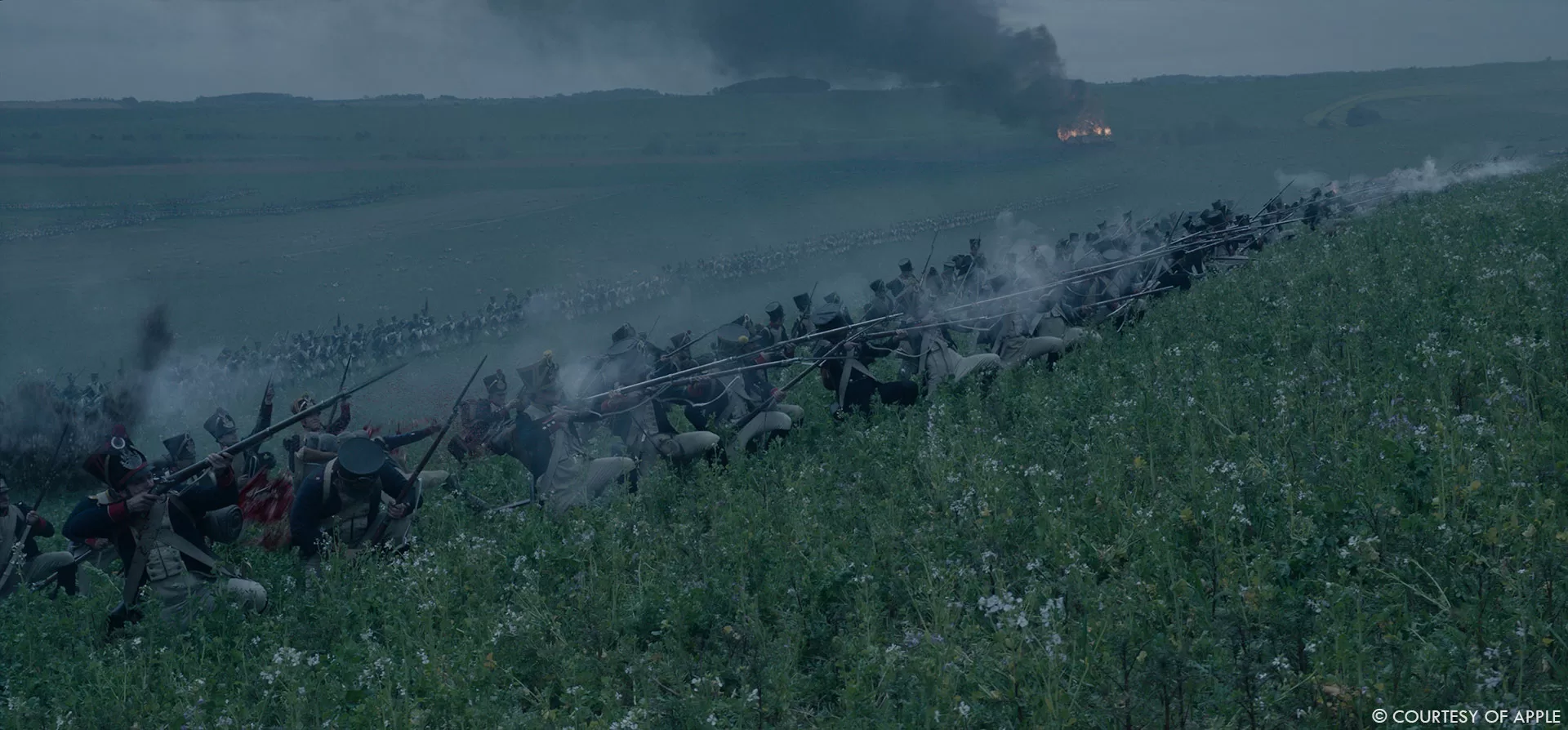
What is your favorite shot or sequence?
Napoleon arriving in the Tuileries. A perfect blend of invisible CG, 2D elements and great cinematography.
What is your best memory on this show?
The best memory is probably sitting in the review with Charley and Stephanie Wagner, our CG Supervisor, scrutinizing the different types of cavalry canters and trots during the Waterloo Battle.
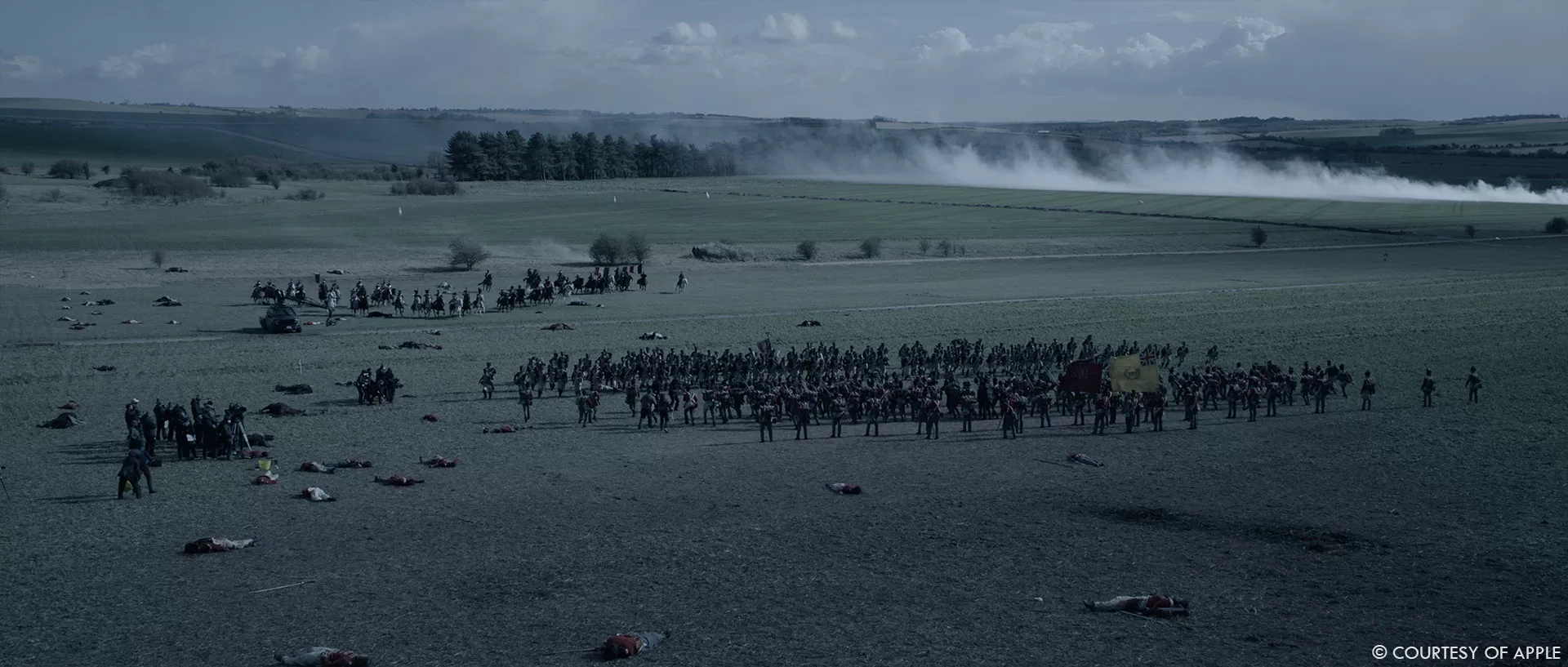
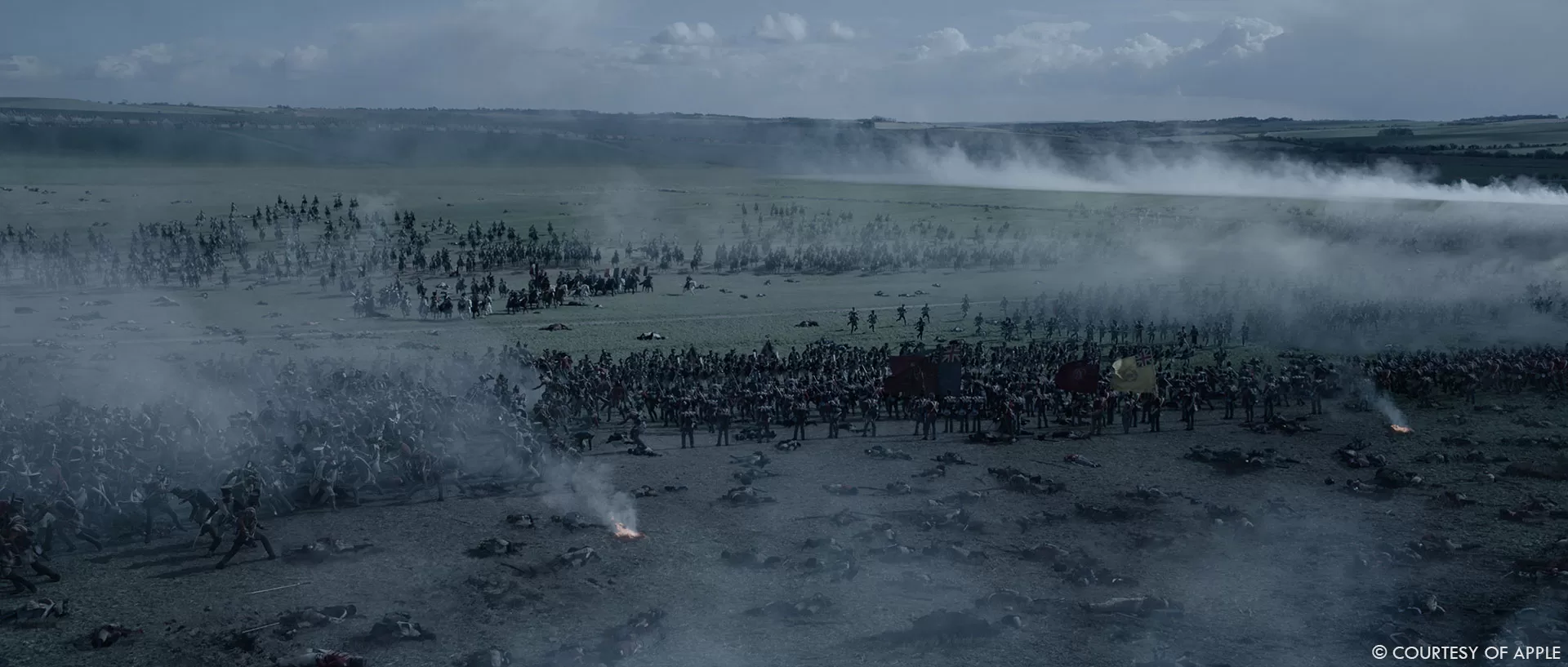
How long have you worked on this show?
From set to final delivery, around 8 months.
What’s the VFX shots count?
MPC worked on 215 shots.
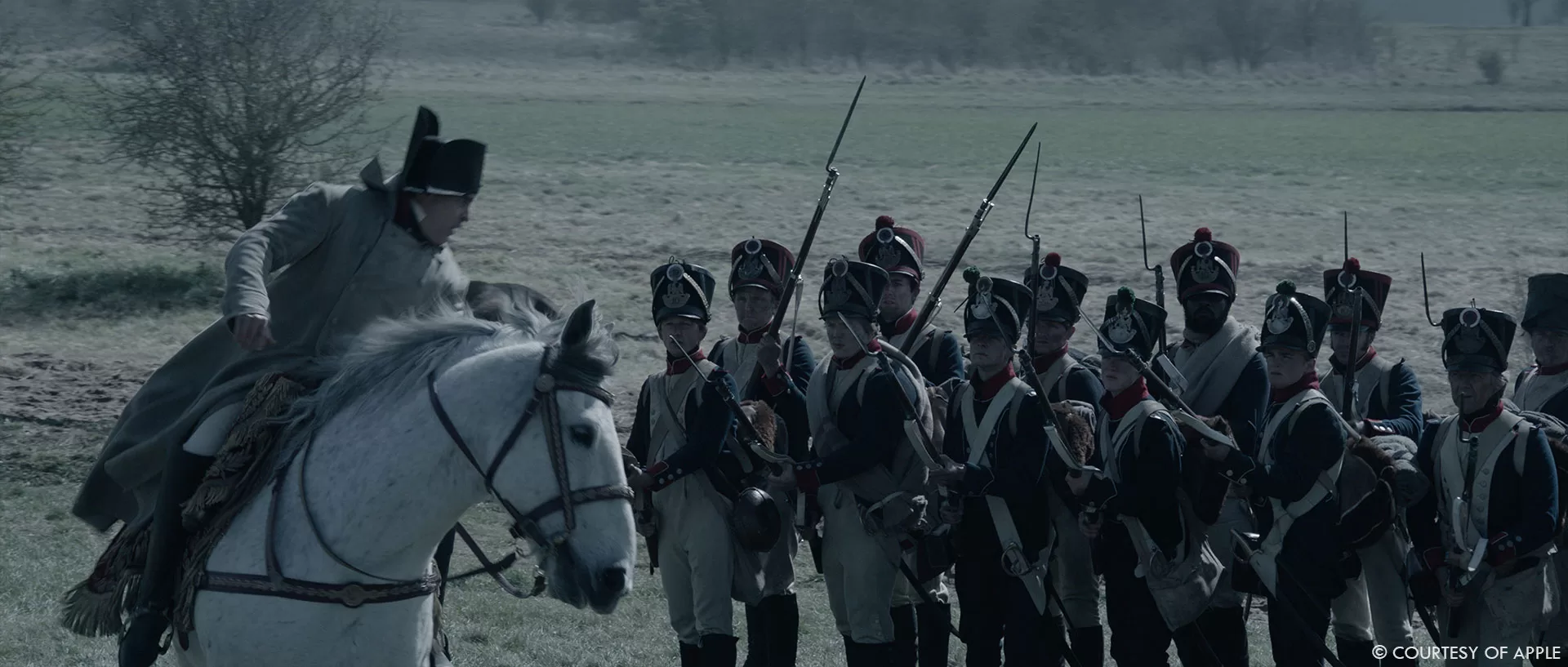
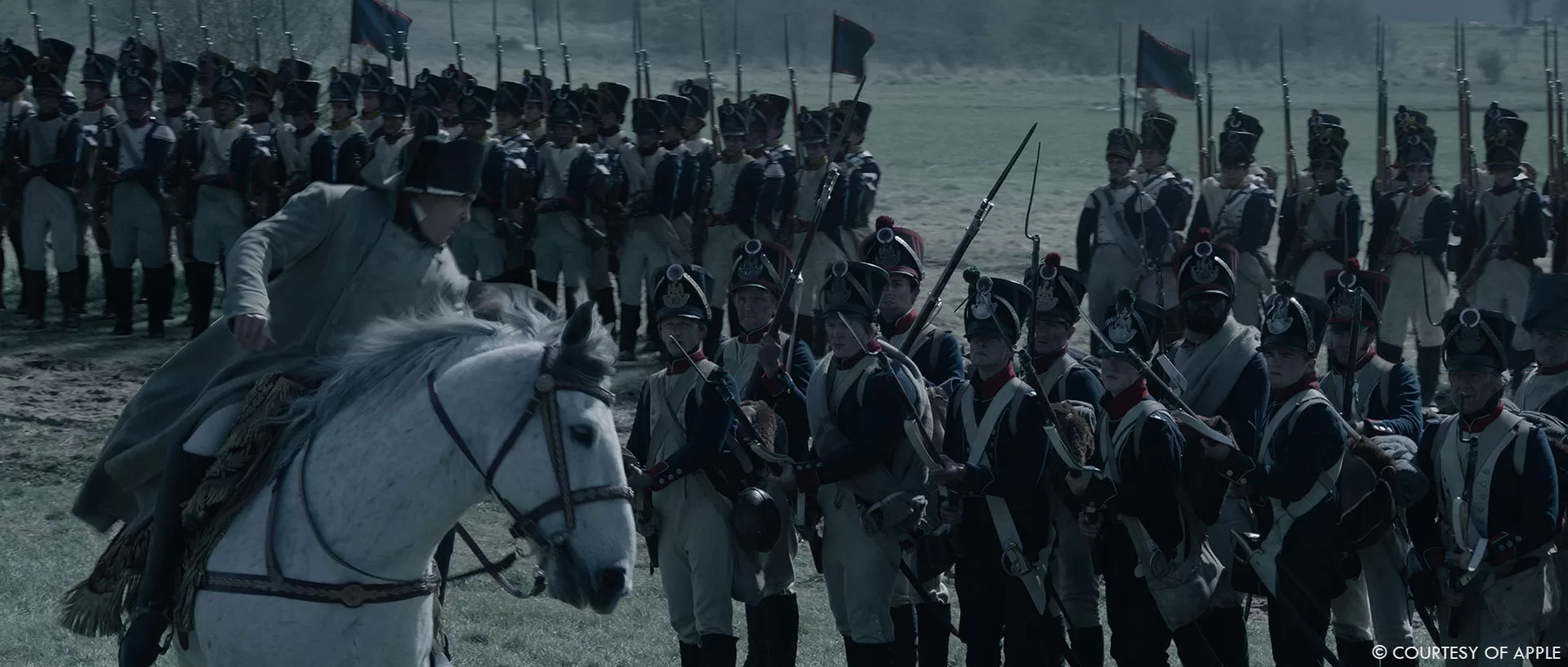
What are the four movies that gave you the passion for cinema?
Shortlisting is always difficult, but movies that I could feel the, almost palpable, craft serving the story: Alien, Brazil, The Fly and Jurassic Park.
A big thanks for your time.
WANT TO KNOW MORE?
MPC: Dedicated page about Napoleon on MPC website.
Charley Henley: Here is my interview of Production VFX Supervisor Charley Henley.
© Vincent Frei – The Art of VFX – 2023






